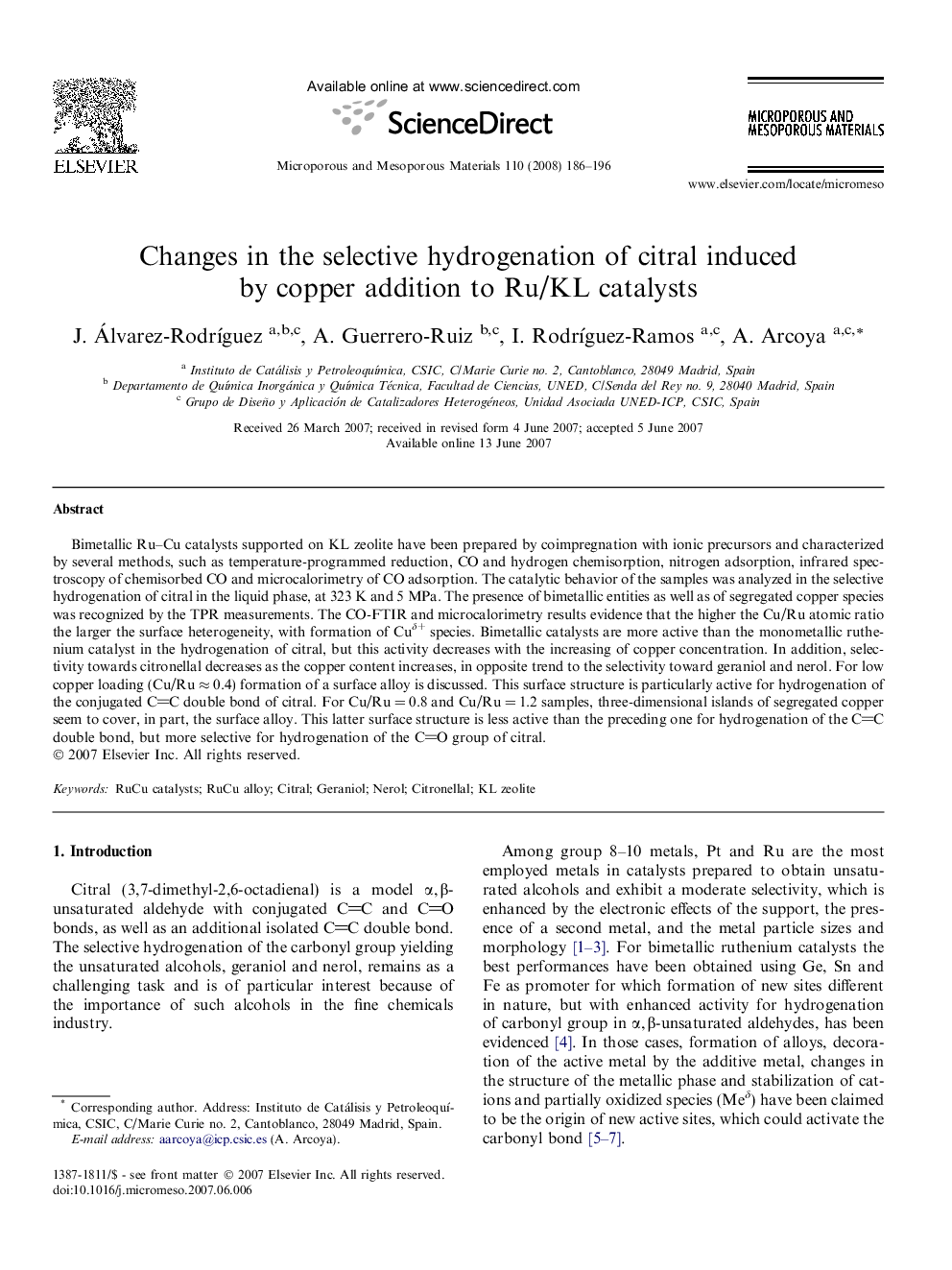| Article ID | Journal | Published Year | Pages | File Type |
|---|---|---|---|---|
| 76355 | Microporous and Mesoporous Materials | 2008 | 11 Pages |
Bimetallic Ru–Cu catalysts supported on KL zeolite have been prepared by coimpregnation with ionic precursors and characterized by several methods, such as temperature-programmed reduction, CO and hydrogen chemisorption, nitrogen adsorption, infrared spectroscopy of chemisorbed CO and microcalorimetry of CO adsorption. The catalytic behavior of the samples was analyzed in the selective hydrogenation of citral in the liquid phase, at 323 K and 5 MPa. The presence of bimetallic entities as well as of segregated copper species was recognized by the TPR measurements. The CO-FTIR and microcalorimetry results evidence that the higher the Cu/Ru atomic ratio the larger the surface heterogeneity, with formation of Cuδ+ species. Bimetallic catalysts are more active than the monometallic ruthenium catalyst in the hydrogenation of citral, but this activity decreases with the increasing of copper concentration. In addition, selectivity towards citronellal decreases as the copper content increases, in opposite trend to the selectivity toward geraniol and nerol. For low copper loading (Cu/Ru ≈ 0.4) formation of a surface alloy is discussed. This surface structure is particularly active for hydrogenation of the conjugated CC double bond of citral. For Cu/Ru = 0.8 and Cu/Ru = 1.2 samples, three-dimensional islands of segregated copper seem to cover, in part, the surface alloy. This latter surface structure is less active than the preceding one for hydrogenation of the CC double bond, but more selective for hydrogenation of the CO group of citral.
